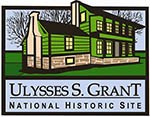Part of a series of articles titled Ulysses S. Grant Virtual Bicentennial Junior Ranger Activity Book.
Article
US Grant Bicentennial Junior Ranger - Part 4: The Presidency and Memoirs
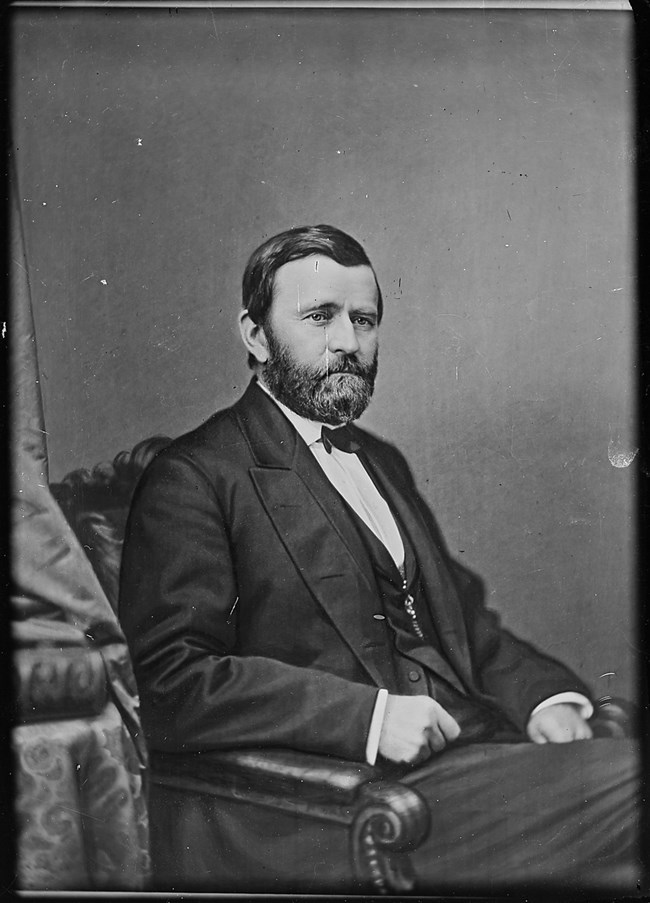
Library of Congress
Biography Part 4 - The Presidency and Memoirs
After the Civil War Grant was elected the 18th President of the United States in 1868. He served two terms, or eight years, as president. Grant supported and signed the 15th Amendment to the Constitution. /drawing of African American voter/ This gave African American men the right to vote. Grant wanted free public education for everyone. He thought education should be for both boys and girls of all races and all religions. President Grant established the first national park. /painting of Yellowstone/ On March 1, 1872 he signed legislation establishing Yellowstone as a national park for the enjoyment of the public.While Grant was president he remained interested in farming. He had purchased the White Haven house and property from his father-in-law after the Civil War. Even though he was in the White House, he still managed the property in Missouri. He made a few trips to the farm while he was president. At one time he thought he would move to White Haven after the presidency and raise racehorses.
Once the Grants left the White House, Ulysses and Julia went on a two-year world tour. Afterwards they settled in New York City to be closer to their grandchildren. Grant later lost all his money in a financial scam. He had to sell White Haven. Soon after that Grant found out he had throat cancer. He was worried about how his family would manage without any money after his death. He decided to write his memoirs of the Civil War. He hoped the sale of the book would provide money for his family. He finished his memoirs just a few days before his death on July 23, 1885. The book was popular and sold well. It is still in print and considered one of the best memoirs ever written by a U.S. general or president.
After Grant’s death Julia decided where to bury him. She chose New York City because she would be able to visit his resting place often. A seven-mile parade of carriages, soldiers, and bands took part in Grant’s funeral in New York City. Over 1.5 million people lined the streets to see this parade. The parade ended at Grant’s temporary tomb.The final tomb was completed in 1897. It is a large structure and is called a mausoleum. Approximately 90,000 people from around the world donated over $600,000 to build this memorial for Grant. It represents the gratitude the people had for Grant. As Commanding General of the Union Army, he ended the bloodiest conflict in American history. Then, as President of the United States, he tried to heal the nation after the war.
Use the audio player below to listen to this passage.
-
US Grant Biography - The Presidency
Audio recording of the short biography of Ulysses S. Grant for Junior Rangers
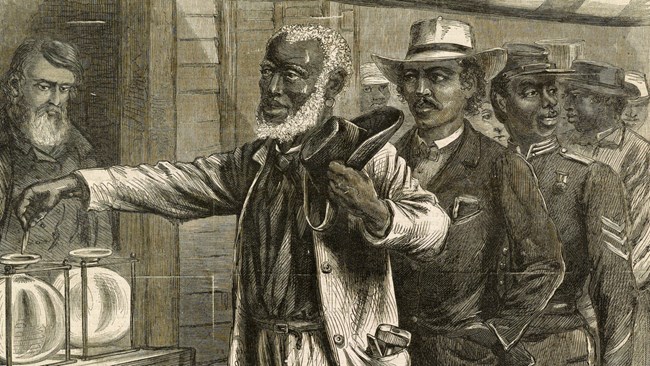
Library of Congress
Activity - President Grant on Civil Rights
President Grant believed all Americans should be treated equally and wanted laws to ensure “security of person, property, and free religious and political opinion in every part of our country.” He believed in the importance of civil rights, which are rights guaranteed to be protected by the government. Grant was president during the Reconstruction Era, a time when Americans tried to rebuild the nation after the end of the Civil War.During Reconstruction, three amendments were added to the U.S. Constitution. These amendments changed the Constitution in the following ways:
- 13th Amendment (1865): Outlawed slavery in the United States.
- 14th Amendment (1868): Established birthright citizenship (if you’re born in the United States, you’re automatically a U.S. citizen) and guarantees that all citizens are treated equally and protected equally under the laws.
- 15th Amendment (1870): Ended racial discrimination at the polls, opening the door for African American men to vote.
Look at the cartoon and answer the following questions:
- What do you notice first after looking at this cartoon?
- What do you think is the message of this cartoon? Why do you think it was created during the Reconstruction Era?
- What is one freedom you most value today? Why?
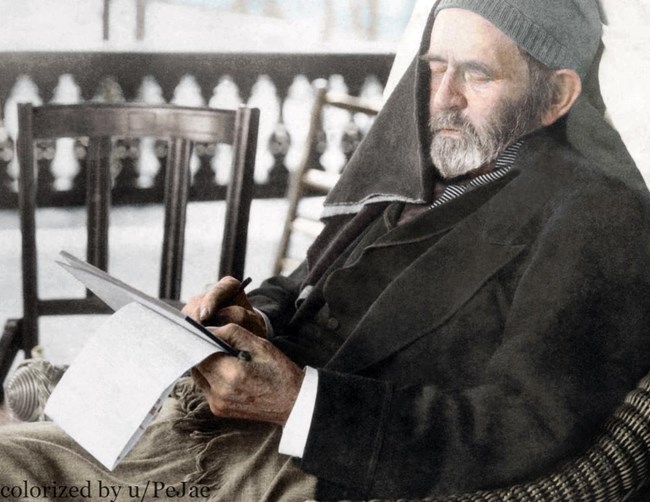
Library of Congress
Activity - Ulysses Writes His Memoirs
Throughout history many famous people have written memoirs. This is a recollection of one’s life or important aspects of one’s life. Ulysses S. Grant was one of those people. He wrote his memoirs regarding his experiences. He devoted a large chunk of his memoirs to his experiences in the Civil War. But he also regaled his memories of childhood and early military experience, including the Mexican American War.Please try to answer the following questions:
- Why do you think Grant wrote his memoirs? Why would Americans want to read them?
- Many famous people have written their memoirs throughout history. Do you think memoirs are always accurate? Can they be biased? Why or why not?
- Grant lived through a defining moment in American history that had an impact on his own life, the Civil War. Most of his memoirs deals with his experiences during that war. We all lived through a trying experience with Covid 19. Write a short personal memoir on how Covid-19 changed your life. A paragraph is enough.
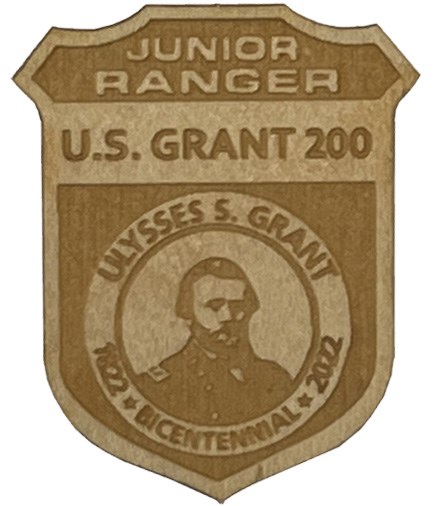
NPS/ULSG
All Finished?
Download your Junior Ranger badge and certificate by saving the badge and certificate images.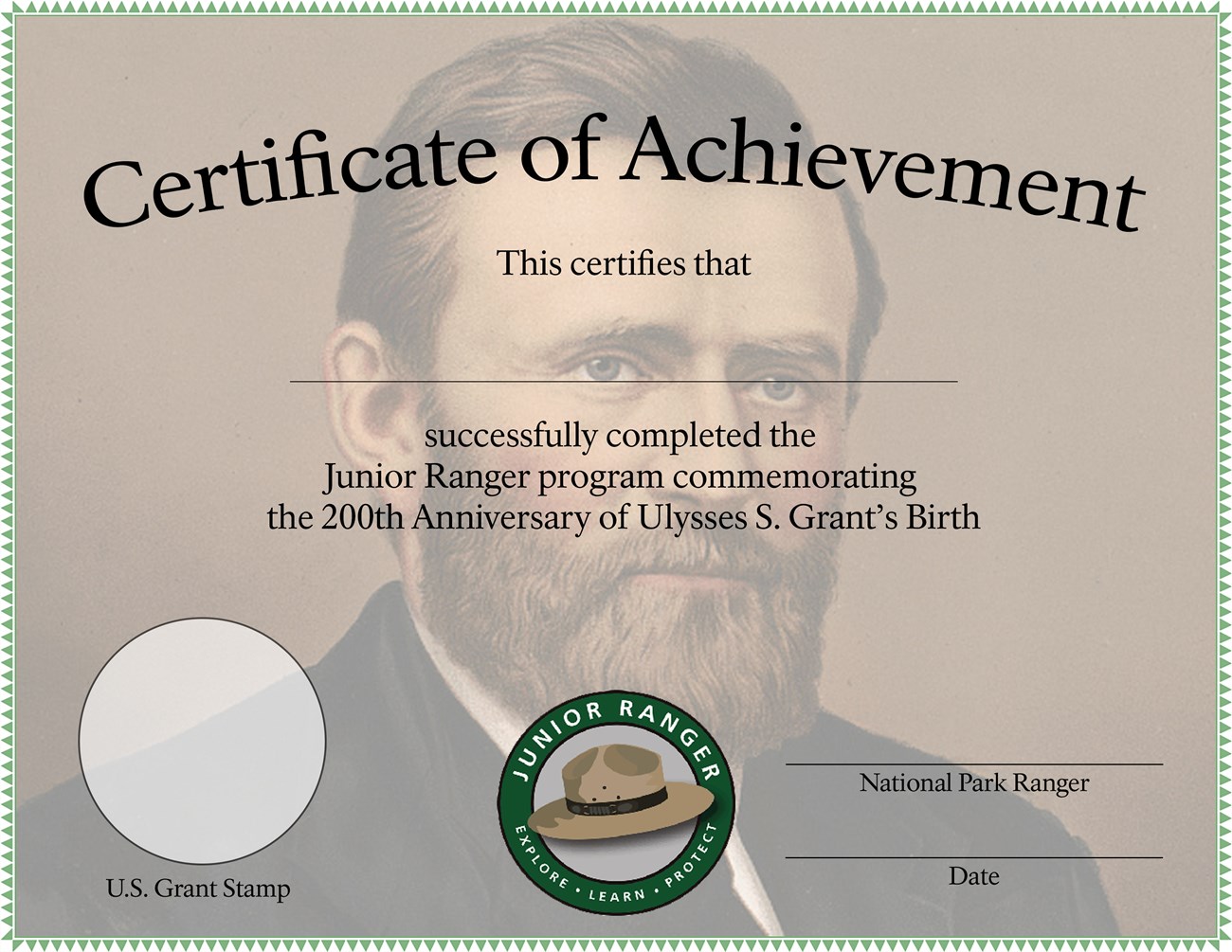
NPS/ULSG
Congratulations!
And thank you for your hard work while learning more about Ulysses S. Grant during this very special year.Last updated: June 23, 2022

